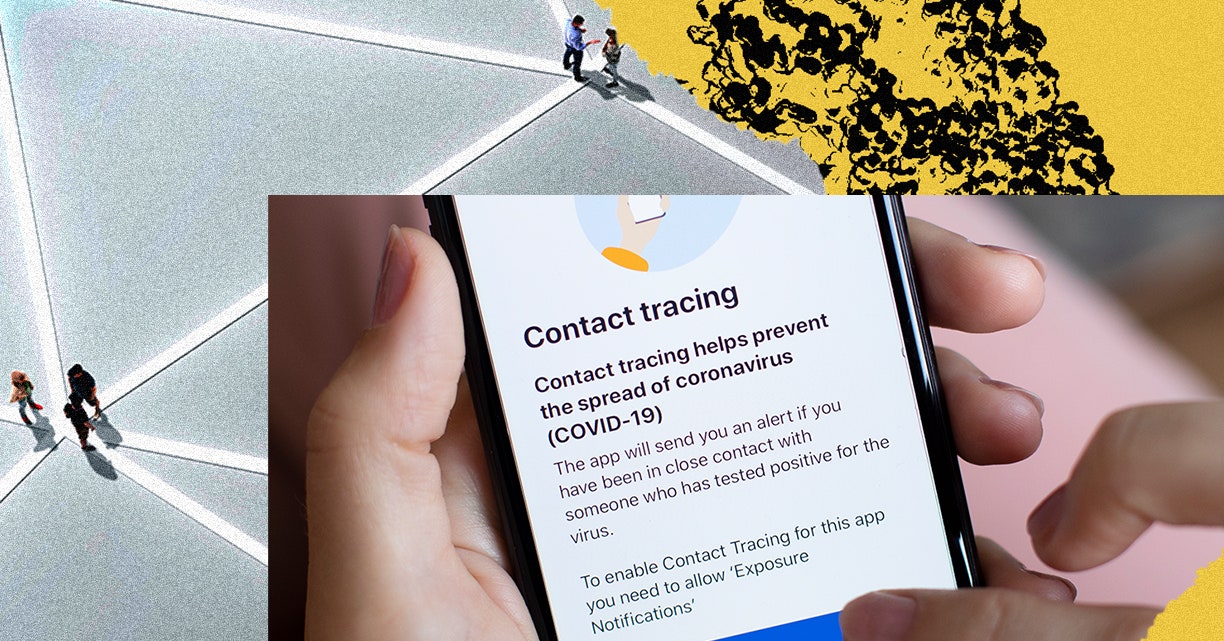
The rise of the Delta variant is sparking all sorts of memories—the anxiety amid the first Covid wave in spring of 2020, the crushing winter surge, the unceasing debate about “nonpharmaceutical interventions” such as masking and distancing, the concerns about kids and schools. But it hasn’t seemed to bring back discussions of contact tracing, one of the first best hopes for containing the pandemic in its earliest days.
Contact tracing has been declared dead many times before. Four and a half months after Covid-19 was first identified in the US, The New York Times said it was failing in many states. And indeed it was, if failing is equated to not stopping the pandemic. One year later, as the country confronts another deadly wave, it seems it’s disappeared from the equation almost entirely. Earlier this summer, a Covid-19 viewpoint in JAMA titled “Beyond Tomorrow” sketched out four possible outcomes for SARS-CoV-2—elimination, containment, cohabitation, and conflagration. It did not include any mention of contact tracing. Covid endgame articles in July and August in The Atlantic and STAT, from reporters who have led the way on coronavirus coverage, similarly said nothing about the role of contact tracing in bringing the pandemic to a close.
What media attention it has received of late has been grim: A recent Kaiser Health News story described contract workers and a public fatigued by the Delta surge. “Contact tracing seems to have fallen by the wayside,” it noted. The story documents fewer workers in states such as Arkansas and Texas to alert people that they’ve been exposed to the virus and advise them on isolation. And Texas’ new budget bans state funding for contact tracing altogether.
In June of this year, just before Delta became the dominant strain in the US and the pandemic looked to be easing up, a survey by the Johns Hopkins Center for Health Security and NPR found that many states were winding down their contact tracing efforts. But just as masking and social distancing are now making their comebacks, so too must contact tracing. Fighting the newest variant of the world’s newest virus will require the help of one of the oldest public health practices—one that’s credited with playing an important role in ending smallpox and SARS-1, and that has been routinely used over the years (along with vaccines and treatments) to contain tuberculosis, measles, Ebola, and various STDs. As the nation struggles to hold back yet another wave, contact tracing can not be allowed to fade away.
From the very early days of the pandemic, contact tracing has had a rough go of it. “It was started way too late,” says Emily Gurley, an epidemiologist with the Center of Global Health at Johns Hopkins, who created an online course to train contact tracers, with more than a million sign-ups so far around the world. State and local health officials began gearing up in the spring of 2020, but were hampered by the lack of easily available testing—symptomless subjects went unrecognized, and their contacts uninformed. Over time, government efforts to contact trace have waxed and waned, slacking off at surges when contact tracers were detailed to vaccination efforts, dropping during those welcome troughs in incidence.
The methods deployed for contact tracing in this pandemic—personal calls and impersonal apps—have been far from perfect, and concerns about privacy abound. As WIRED has reported, the use of apps for contact tracing has pretty much failed in the US. In the UK, people complain about a “pingdemic”—getting notifications from a widely used app that is so sensitive people in the next flat might get a message even though they’d never been in the same room with the infected person. In one week this summer, 690,000 people in England and Wales received isolation notices, according to The Washington Post, and businesses complained that so many workers were staying home they couldn’t stay open. The apps are, let’s say, a work in progress.
